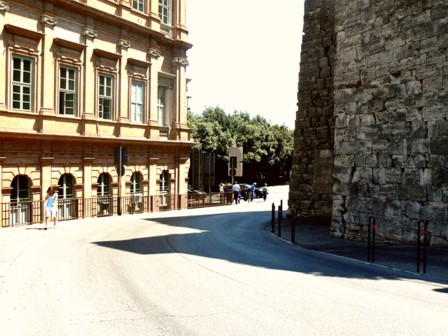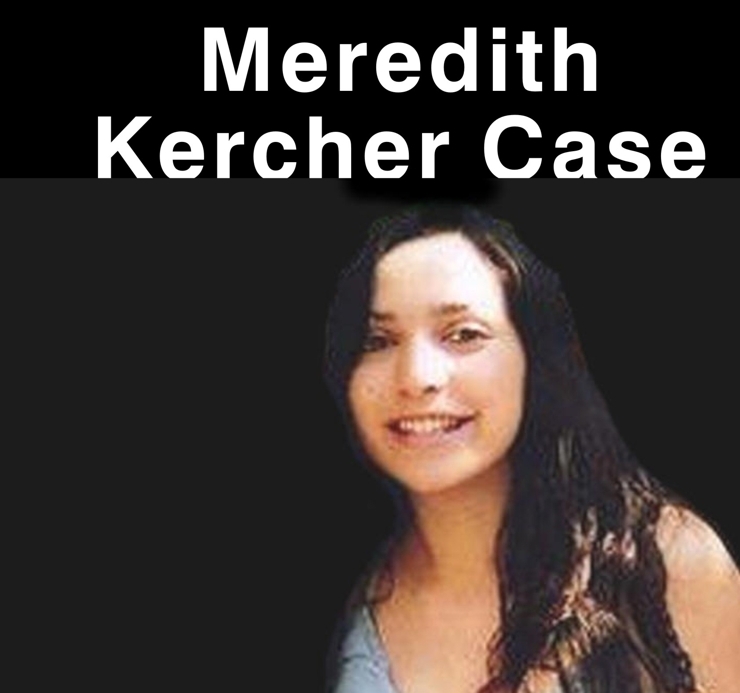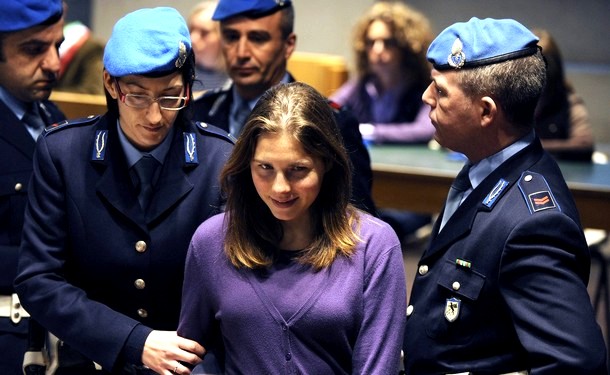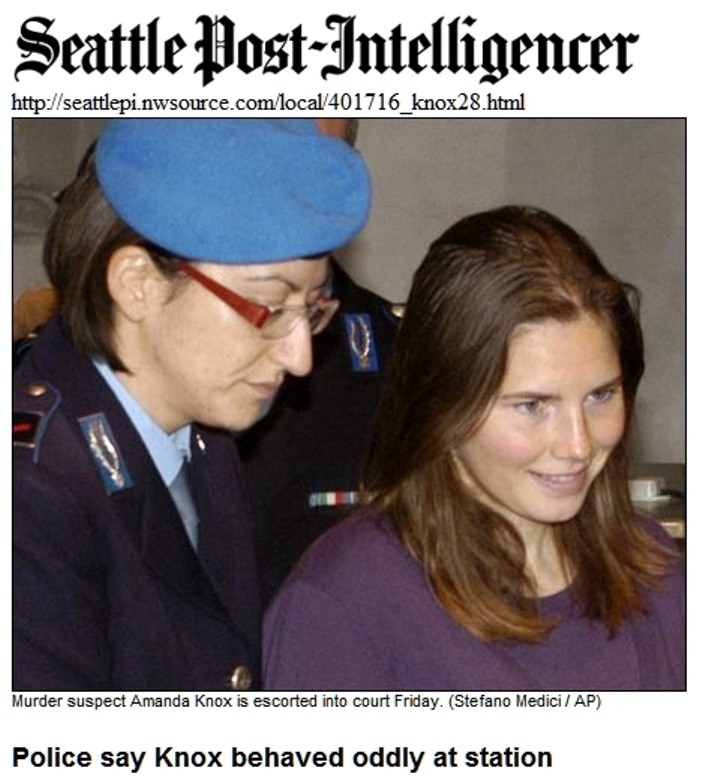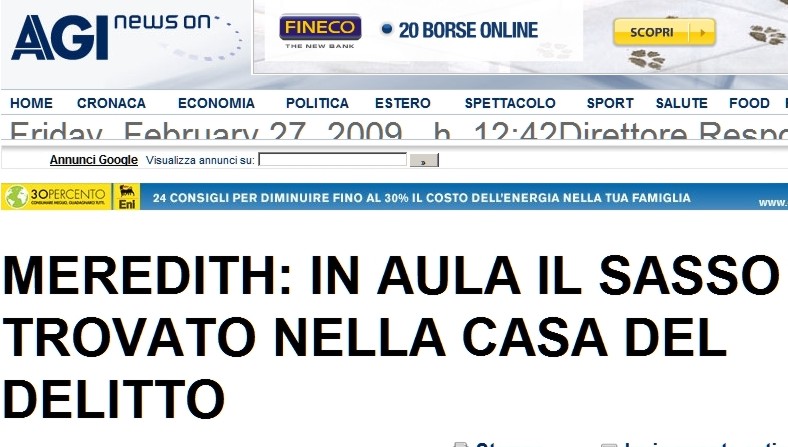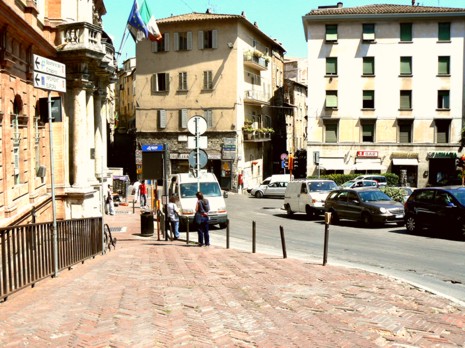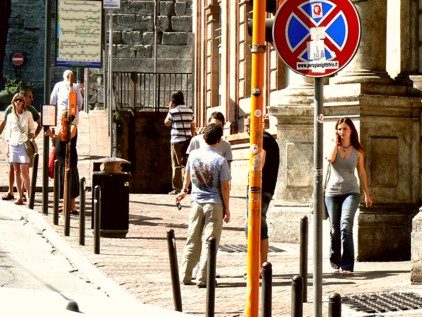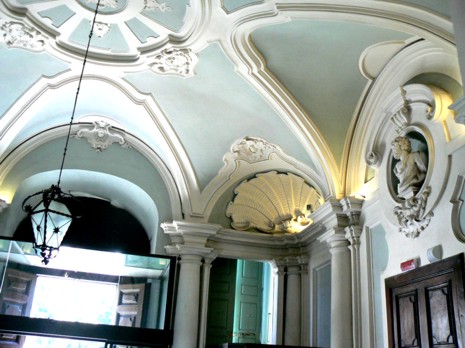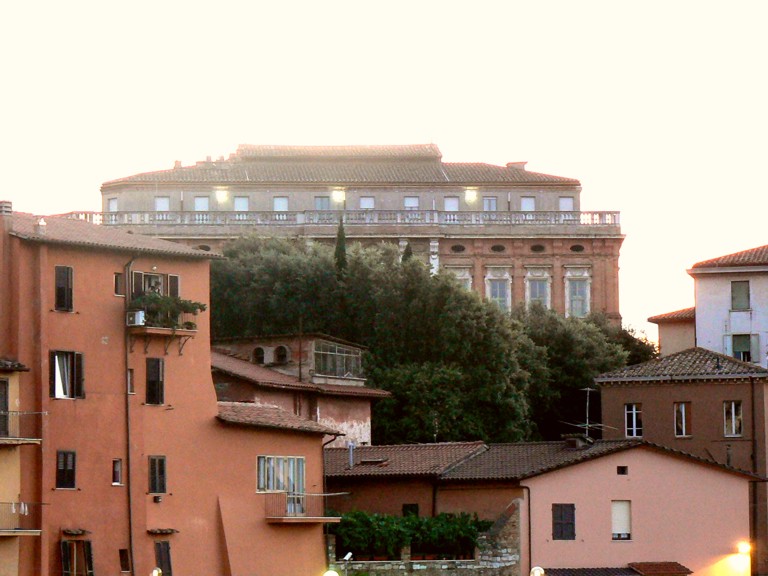
Political & economic headsup: US is demonstrating unsorted systems problems in spades. Do watch your investments. As Washington DC policy gets more & more off-target, big New York investors are betting very heavily that stocks will soon crash. Gross systems mismanagement 2017-20 tanked stocks several times.
Friday, March 06, 2009
Brief Explanation Of Difference Between “Calunna” And “Diffamazione” EDIT
Posted by Machiavelli
[image]
The crimes of calunnia and diffamazione are located in different sections of the criminal code.
Diffamazione is in the chapter entitled “crimes against honour” in the section of the Code protecting personal liberties.
Calunnia is discussed in the chapter entitled “crimes against the administration of justice”, in a section that protects public powers.
The charge of calunnia (art. 368) has been commonly translated as “slander” in the English/US media. This translation is incorrect, however, as calunnia is a crime with no direct equivalent in the respective legal systems.
Calunnia is the crime of making false criminal accusations against someone whom the accuser knows to be innocent, or to simulate/fabricate false evidence, independently of the credibility/admissibility of the accusation or evidence.
The equivalent of “criminal slander” is diffamazione, which is an attack on someone’s reputation, usually to sway a judicial process.
The charges of calunnia and diffamazione are subject to very different jurisprudence.
Diffamazione is public and explicit, and is a more minor offence, usually resulting in a fine and only prosecuted if the victim files a complaint.
Calunnia can be secret or known only to the authorities. It may consist only of the simulation of clues, and is automatically prosecuted by the judiciary.
Tuesday, March 03, 2009
Cartwheels Or No Cartwheels? You Be The Judge
Posted by Peter Quennell

[above: examples of cartwheels, not by Amanda Knox]
The ever-careful and supremely objective Steve Shay has another scoop!
This below is Mr Shay’s report to gullible Seattleites (if there are any left) in the, ah, very well-edited West Seattle Herald:
“Amanda accompanied Raffaele to the station where he was then interrogated by Monica Napoleani, the Perugia chief of homicide. Amanda was there to support him, as he had supported her before, when she was interrogated,” said Chris Mellas. Chris Mellas is the husband of Edda Mellas, Amanda’s mother. Both live in West Seattle.
“She was actually sitting alone in a separate room waiting for her boyfriend, and Napoleani said in court Friday (Feb. 27) that when she went to get some water she walked by the room where Amanda was and saw Amanda “˜doing the splits.’ She said she thought this was “˜odd behavior,’ and that Amanda should have instead appeared to be mourning the loss of Meredith.
The tabloid press further sensationalized her statement by changing “˜the splits’ to “˜cartwheels,’ and the mainstream press ran with that. “
“Amanda does yoga to calm herself down and relieve stress, and she told her father and me that’s why she was doing the splits. Also, in those four days she was in mourning over Meredith, which followed her outrage. Six hours after the discovery (of the body) she was like, “˜Let’s find the bastard who killed her.’”
Meanwhile, back here in the real world…. This was the actual report from the BBC News:
Meredith Kercher murder suspect Amanda Knox “turned cartwheels” in the police station after the killing, a police witness told a court in Perugia, Italy.
Former flying squad chief Domenico Profazio said he had to tell Ms Knox and her boyfriend Raffaele Sollecito their behaviour was “not appropriate”.
From Seattle’s own Post-Intelligencer
They were always together, Napoleoni said, and did not want to be separated. While police questioned Sollecito, Knox waited in a side room where policewoman Lorena Zugarini, also present at Knox’s questioning, said she saw Knox doing a cartwheel and the splits. Zugarini said she told Knox it was “not the right place” for such activities.
From the UK’s Sky News:
Ms Napoleone also described Knox’s unusual behaviour at the police station where she had been taken for questioning. She said: “She had complained that she was feeling tired and at that stage I told her that she could go if she wanted.” “She said she wanted to stay, Sollecito was also at the station at the time and she said she wanted to wait for him.
“A few minutes later I walked past a room at the police station where she was waiting and I saw Amanda doing the splits and a cartwheel. It was around 11am on November 5th.
The exchange came as Inspector Ficarra, of the city’s Flying Squad, described 21-year-old Knox’s bizarre behaviour after her arrest following the killing in 2007.
“I was in the elevator and when I got to the floor where the Flying Squad department is the door opened and I saw Amanda doing floor exercises,” he said.
“She was doing the splits, cartwheels and arching herself backwards, pressing her hands on the floor. I said to her, “˜What on earth are you doing? Is this the right way to behave?’
Chief Inspector Monica Napoleoni told the court where the pair are on trial for murder how, at the police station as they waited to be first questioned, Mr Sollecito and Ms Knox “appeared completely indifferent to everything, lying down, kissing, pulling faces and writing each other notes. They were talking to each in low voices the whole time ““ it was impossible that they were behaving like this when there was a dead body in their house. It seemed strange to everybody”. Ms Knox had also “turned cartwheels and done the splits,” she said.
From the UK’s Daily Telegraph:
Ms Napoleoni recalled thinking that Miss Knox and her boyfriend seemed “indifferent to everything” when they were called to a police station in Perugia for questioning on Nov 5, 2007. It was there that the American turned cartwheels and did the splits.
And the last word, as always, from the London Times:
Ms Napoleoni said she and other officers had seen Ms Knox “doing cartwheels and the splits” while Mr Sollecito was being questioned and she was waiting her turn. Ms Napoleoni said she found this “very strange”. She said Ms Knox and Mr Sollecito “had a bizarre attitude throughout - they were laughing, kissing and pulling faces at each other.
Pehaps Chris Mellas and Steve Shay and Ken Robinson of the West Seattle Herald should discover the tubes of the internet.
Sunday, March 01, 2009
Trial: Wrap-Up On The Testimony For This Week From Officers Who Questioned Knox
Posted by Nicki
1.Monica Napoleoni
Today’s hearing resumed with the deposition of Ms Monica Napoleoni, the head of Perugia’s homicide squad, which had been halted yesterday.
Some of her statements were extremely touching and sad. For example, she reported on the text messages that were found on Meredith’s phone from her parents who, having heard on the news broadcasts that a British student had been murdered in Perugia, wanted to make sure that their daughter was fine. [A heartfelt comment on this by reader TT on the post below this one]
Ms Napoleoni also described what she saw when she entered the murder room and leaned over Meredith’s lifeless body. She reported that Meredith body had been cut about so ferociously that it was very hard for her to even look at the wounds.
Ms Napoleoni also talked about a female shoe print that was found next to the pillow near Meredith’s body, a footprint of a size compatible with Knox’s.
During cross-examination, Sollecito’s defense showed Ms Napoleoni pictures of the cottage rooms taken while the search by the Flying Squad and Scientific Police was taking place. She pointed out that shoe covers and gloves were always being worn by everybody present.
In one instance on December18th when the bra clasp was found and sequestered “whole overalls were used by everyone, since the scientific police were at work”.
Ms Monica Napoleoni confirmed the impartial handling of Knox on the night of 5-6 November which she briefly witnessed, and also confirmed that she witnessed “Knox”˜s gymnast show” and improper behaviour of the couple during the course of investigating such a tragic event.
2. Rita Ficarra
Ms Rita Ficarra, the officer in charge of the Perugia Flying Squad, reported about the night between November 5 and 6, when the two defendants were interrogated and later arrested in the wee hours of November 6th.
Knox turned up at the police station, although she hadn’t been asked to, “because Sollecito had been requested to be interviewed and she was accompanying him” Ms Ficarra said.
She was not required to stay, and could have gone home any time.
“I encountered her in the waiting room doing splits, cartwheels and bridges. She was showing off her gymnastic capabilities”. Ms Ficarra added that she reproached Amanda, and asked her to quit her inapt behaviour, as in addition to her gymnast show, Knox kept French-kissing, stroking and hugging Sollecito.
Ms Ficarra felt that was very inappropriate behaviour to be going on in a police station while waiting to be heard concerning a gruesome murder. “Everybody else was terrified” Ms Ficarra said “except for Amanda and Raffaele, who seemed indifferent, were smirking, and kept on French kissing.”
Ms Ficarra then described Knox’s interrogation and the false accusations against Patrick Lumumba.
Ms Ficarra testified that when Knox was asked about Mr Lumumba”˜s text message to her on the night from his bar, “she started crying and wrapping her hands around her head, she started shaking it, and then she said: it was him”¦Patrick killed her”.
At this point, Ms Ficarra said “I stopped the interrogation and informed the judicial authorities”. Ms Ficarra stressed that “Amanda was never mistreated” and that “she had a chance to rest, go the bathroom, and eat”. She insisted on writing out and signing statements both then and after being warned of her rights. She declined to have a lawyer present.
Ms Ficarra’s deposition continued: “After Knox was notified of her arrest ““ in English - she asked for a pen and paper, saying: I’ll give you a present”. Ms Ficarra added “Knox asked me to read what she was going to write before she was taken to jail, because she wanted me to have a clear idea about what had happened”.
Ms Ficarra maintained that “Knox was never subjected to threats or violence…. she was treated firmly, but with cordiality”.
3. Knox and Sollecito
As Andrea Vogt reported, Knox and Sollecito both made impromptu declarations during today’s trial session.
Knox made a very brief statement in Italian, claiming “They did offer me drinks and food, but they started treating me as a person only after I made those declarations”. She did not elaborate any further.
Sollecito’s declaration took more time. He claimed that during his interrogation on the evening of November 5, he asked to make a phone call to his father but was denied it. He then asked for permission to call a lawyer, but he was not allowed to do so. He did not report any mistreatment or any physical or psychological abuse from the police.
4. A comment on this.
It should be noted that when Sollecito asked for a lawyer’s assistance, he had not yet even become a suspect. His status was still that of a “person knowledgeable about the facts” who is not legally entitled to insist on a lawyer being present.
Not an actual suspect. Simply a person who could possibly yield useful information to the investigators. So why would someone who is being heard as a “helper” be so concerned about getting a lawyer? If he really had nothing to hide?
The next trial dates are March 13 and 14, 20 and 21, and 27 and 28.
Saturday, February 28, 2009
Trial: Video Report By Nick Pisa Of Testimony On Saturday Morning
Posted by Peter Quennell
Sky News no longer carry this video. We keep this post live because of relevant reader comments below. The video included shots of Knox apparently enjoying the attention. We have still images.
In this session, various officers started to describe what took place at the Central Police Station on 5-6 November 2007 leading to the arrest of Knox and Sollecito.
We carry translations done later of the testimony of all the officers. They hang together, and are in stark contradiction to Knox’s “memoriale” of midday 6 November.
Trial: Nick Squires Reports On The Saturday Morning Testimony
Posted by Peter Quennell
Overview
This below is part of the testimony this morning from the crime scene investigators. Click above for the full story.
We will be posting a wrap-up, if possible tonight, with a lot more detail from the Italian media.
This below is part of the testimony this morning from the crime scene investigators. Click above for the full story.
Officer Chiacchiera and Officer Napoleoni
A police officer, Marco Chiacchiera, told the court that no record was found of a telephone call that Mr Sollecito claims to have received on his apartment landline at 11pm on the night of the murder, Nov 1, 2007.
The Italian IT graduate maintains he was in his flat that night but cannot remember if Miss Knox spent part or all of the night with him.
Miss Knox, a University of Washington student from Seattle, initially told investigators she was in the house when Miss Kercher was killed and covered her ears against the victim’s screams. Later, she said she was not there and claimed her earlier remarks were made under pressure from the police.
Another police officer, Monica Napoleoni, who heads Perugia’s murder squad, recalled discovering Miss Kercher’s body, semi-naked and partially covered by a duvet, in her bedroom.
The British student’s eyes were open, she said, and her blood-soaked bra was on the ground near her feet.
Ms Napoleoni recalled thinking that Miss Knox and her boyfriend seemed “indifferent to everything” when they were called to a police station in Perugia for questioning on Nov 5, 2007. It was there that the American turned cartwheels and did the splits.
Amanda Knox’s father is reported as responding that she was a yoga enthusiast, and it was not unusual for her to break into a yoga pose in the middle of conversations.
Trial: Andrea Vogt Reports More Of The Details Introduced Friday
Posted by Peter Quennell
Introduction
Click above for the full report. From Andrea Vogt, a highly objective reporter, one of only two or three Italian-speaking American reporters actually attending the trial.
1) Knox at the police stationz: Officer Profazio and Officer Napoleoni
Giacinto Profazio, who supervised the investigation, said he had to tell the suspects at one point [at the police station] that it was inappropriate for Knox to sit on Raffaele Sollecito’s lap.
The couple was kissing, making faces and acting increasingly annoyed at investigators’ questions, said Monica Napoleoni, the head of Perugia’s homicide squad… “I took particular notice of their behavior because it seemed impossible that these two kids were there kissing when the cadaver of their friend had just been found,” Napoleoni said.
Police also emphatically defended their handling of the Meredith Kercher murder investigation, refuting allegations that Knox and Sollecito were mistreated during questioning in November 2007.
Investigators were firm, she testified during the six-week-old murder trial, but “absolutely” did not use violence—a claim Knox has made.
“She was given a drink more than once,” Napoleoni said. “She was given a hot chamomile tea; she was offered breakfast. Amanda was treated well.”...
2) And at Meredith’s house and Sollecito’s apartment: Officer Napoleoni and Officer Chiacchiera
Police and defense lawyers clashed over key forensic points, including whether or not the crime scene was contaminated, how the murder weapon was identified, luminol-enhanced footprints compatible with those of Knox and Sollecito, Knox and Kercher’s blood found in the bathroom, and most contentiously, Kercher’s bra clasp with Sollecito’s DNA on it.
Both Napoleoni and Marco Chiacchiera, the first investigating officer to arrive, said the crime scene didn’t jibe with the lone burglar theory put forth by the suspects. For example, the room had been messed up before the window had been broken, Chiacchiera said.
The 10-pound rock found inside the room would have been difficult to throw from the ground, more than 10 feet below, he said.
“The fact that this girl was semi-nude with a wound of that type, in a pool of blood in her own room with the door locked, and then with the rock and window like that—well, progressively, the analysis of all the investigative elements made us suspicious,” Chiacchiera said.
Investigators’ suspicions deepened once phone records arrived, he said, because there was a void of calls from 8:30 in the evening until the next morning on both their phones. In months prior, records showed phone activity until late in the night. In addition, Sollecito had told police his father had called him at 11 p.m., but phone records showed no such call….
Even the smallest details became points of [defense] contention, such as why investigators took into evidence the Manga comics Sollecito kept near his bed, which Chiacchiera described as “a cross between pornography and horror,” but took no notice of a nearby Harry Potter novel.
Friday, February 27, 2009
Trial: Lot Of Evidence Introduced In First Pass In Afternoon Session
Posted by Peter Quennell
This was testimony from the crime-scene investigators who searched Meredith’s and Sollecito’s apartments on the day after the crime.
The UK press and the Associated Press (the main source for reports in American media) have not yet updated their stories beyond those linked-to below.
But the Italian press is reporting testimony from the officers who found the knife in Sollecito’s apartment which may have Knox’s and Meredith’s DNA on it (see Nicki’s post Monday on the knife and other DNA below).
Also there was testimony on the phone records which seems to indicate Knox’s and Sollecito’s mobile phones were turned off almost together around mid-evening on the night of the murder. There is a record of Sollecito’s being turned on again at daybreak the next morning, but apparently no record of when Knox’s phone was turned back on.
Also introduced this afternoon was the first of the testimony on the finding of Meredith on the floor of her bedroom (see Brian’s post Wednesday on this sad and apparently very telling scene).
There was crime-scene-officer testimony also on the finding of the large rock in Filomena’s bedroom. The defenses are reported to have put on a spirited show here, and to have again argued the possibility that an intruder could have got in via Filomena’s window.
Crime scene officers testified that a ready-made much-easier break-in route existed, by way of the balcony and the windows and balcony door out back.
On Sunday, our poster Kermit will be putting up new Powerpoints showing why this route is so viable. And again but even more-so how absurd Filomena’s window looks as a preferred point-of-entry.
Trial: Nick Pisa Of On-The-Ball Sky News Reports Early Testimony
Posted by Peter Quennell
Hmmm. Many officers testifying = weakness of the case? That seems a stretch.
And in the accompanying article on Sky News, Nick Pisa reports one officer’s testimony.
Mr Profazio, who now leads the narcotics division in Rome, told the court how he had been on holiday at the time of the murder, but immediately returned to work.
“I was away when I had a phone call from colleagues telling me that there had been a terrible murder. The body of an English girl had been found with her throat cut,” he said.
“I immediately headed back to Perugia and got to the scene at the same time as the forensic officers from Rome.
“A window was pointed out to me, which was broken and which was said to have been the point of entry, but I thought it was strange as it would have needed a superhuman effort to climb up to it.
“I noticed that there was a much easier way into the house at the back, via a terrace and a boiler, there was a chair and table on the terrace and it would have been a lot easier to get in this way.”
He also told the court how both Knox and Sollecito’s mobile phones had been switched off “practically at the same time” between 8.00pm and 8.30pm the night of the murder.
Mr Profazio also told the court that a search of Sollecito’s house had discovered a 30cm kitchen knife which was given to forensic experts for examination.
Trial: Nick Squires Reports On The Friday Morning Session
Posted by Peter Quennell
Click above for Nick’s report. Some perhaps-overdue seriousness is now setting in, it seems.
The 21-year-old American student, in jeans and a purple cardigan, appeared more sober and downcast than on previous occasions as she was led into court in Perugia, where she and her Italian ex-boyfriend are on trial for murdering the Leeds University student.
As soon as she sat down she bowed her head and appeared to start crying, after greeting her father, Curt Knox, with a nervous smile.
She was comforted by her translator, a uniformed prison guard and one of her lawyers, who patted her gently on the back. Her demeanour was in marked contrast to previous hearings, when she smiled and joked with her lawyers.
Thursday, February 26, 2009
Cutting Through The Confusion Over Knox’s Status In Perugia
Posted by stewarthome2000
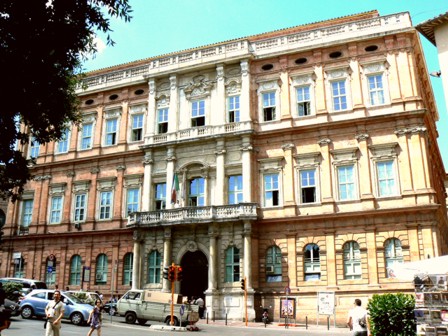
[Shots: School for Foreigners; bottom shot from above Meredith’s house]
The media have now repeated countless times that Amanda Knox was on a “study abroad program”.
In fact, as these things are defined, she was not. It is precisely that she was NOT on a study-abroad program that she was able to adopt a lifestyle that seems to have led her to where she is now.
To go on a study-abroad “program” means that you attend an organized and SUPERVISED curriculum and agenda, most often with peers, faculty and/or at the very least a local administrative staff person assigned to periodically look after the participants’ behavior and well-being.
In fact the University of Washington does not even have a study abroad “program” in Perugia. It merely suggests to UW students that the Universita per Stranieri is a possible destination and place for students to go on their own, and if asked helps out with some administration.
Knox took the “non-conformist” path to study abroad. I recall reading that she did not want to go on a program so as to not follow the group, so to speak. So she did study abroad, but cheaply, and outside an organized program by the University of Washington. She was basically in Perugia on her own.
This is characteristic of at least two type of people, those who are adventurous, exploratory and want a true full-immersion experience into the cultural side of the host country (usually Italian majors), and those who want to be untethered and to have total freedom and no one to answer to so they can do as they wish.
Her casual attitude to her studies and other strong hints in her behavior and writings suggests that she was the latter type.
And presumably her biological parents understood all of this and signed off on it, even before Amanda Knox ever left Seattle.
Parents especially should know that if Knox had attended a UW-operated or US-University run study abroad program with supervision, her attendance in class would have been monitored, and any behavior that would upset roommates may have been reported.
In these programs for the most part there are strict housing rules such as no overnight guests, let alone bringing guys home to sack up with. Most of the time roommates will complain on the spot or get back to the American administrators that they have an out-of-control roommate bringing guys home, drinking excessively, or doing drugs.
In addition, programs with the proper supervision have enough of a presence to let the participants know that someone is at least checking up now and again. And as a result they watch their behavior.
Furthermore, in well-run programs, students are given significant preparation about living in the specific host country and city with pre-departure materials and perhaps meetings, talking with ex-participants, and attending an extensive multi-day orientation where staff and even local police lecture them about the many pitfalls of living in a foreign and new environment away from home.
They are reminded that the laws are different in other countries, and more importantly that there are some bad people walking the streets. They are told to enjoy themselves and learn, but also to be careful, stay alert, stay out of trouble, and so on.
I myself work in study abroad and we know what unleashed unsupervised colleges students get themselves into. We are trained to look for potential problems and we visit all students accommodations at least once per month and speak with everyone there.
We have open-door counseling and professionals with years of experience on staff. We watch out for all our students regularly… we know what behavior to look for, and when to intervene, at least most of the time.
Yes, it costs more to attend the Universita per Stranieri or any overseas university through a US-college or US-university monitored program with local on-site staff and supervision.
But the situation Amanda has created, or at least found herself in, is much less likely to happen to students on a supervised and accredited study abroad program.
Let’s face it, at the age of 20, 21, or 22, many young adults are still really more or less kids. Naive and vulnerable, especially those who have yet to explore their “wild side”, they sometimes see this as an opportunity to make up for lost time.
This is exemplified in the fact that many pass out from drinking in the days after they arrive. Bottom line, they need guidance, and no more so than when they are 8000 miles from home and on their own.
Knox took the “I am too good to go on study abroad program with fellow students” route and the cheapest way overseas. And it is not proving so cheap anymore.
Her biological parents really should have known better. All parents should either make sure the students are mature enough, or make sure they have a structured environment that can assist them while abroad. It is well worth the extra cost and peace of mind.
So the media should please get this straight from now on.
- Amanda Knox was NOT on a study abroad “program” while in Perugia. She was at most “studying abroad” as that term is used very loosely.
- She took a leave from the University of Washington to study Italian at what is essentially a glorified language school which anyone can attend.
- She was totally unsupervised in a high-risk situation where it would have seemed obvious to any supervisor that she was looking to break away.
- And she most likely would have had a very difficult time getting any credit for her studies from the University of Washington at the conclusion.
So. The worst possible deal for any student abroad. The parents signed off in advance. It seems to have exploded on Knox. And poor Meredith died.
